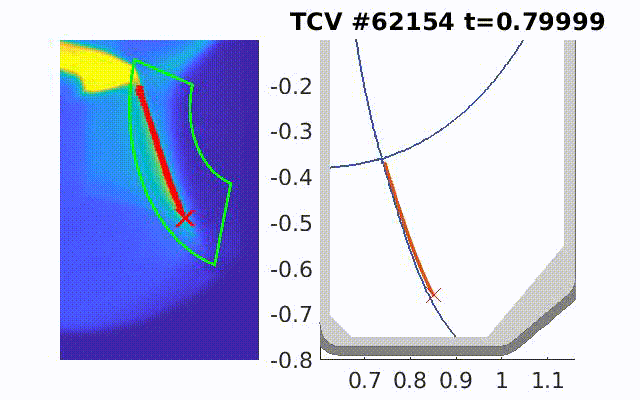The extreme conditions in a nuclear fusion reactor result in high heat and particle loads on the reactor wall. The survival of the wall can be prolonged by plasma detachment, a state in which the plasma in proximity to the wall is cooled by controlled impurity gas injection. The challenge is to monitor the detachment state in real-time, and carefully control the injection of gas accordingly. Unfortunately, it is unclear how fast detachment evolves, i.e. its dynamic behavior is unknown. Further, ideally detachment is controlled not only by reacting on real-time measurements (feedback) but by acting preemptively using control-oriented predictive models.
The Energy Systems and Control group focusses on the systematic dynamic characterization of detachment and its real-time control. The light emission of radiating impurity particles is a strong function of the local plasma temperature, which means detachment can partly be monitored by fast filtered cameras. By feeding these camera images to lightweight analysis algorithms, we can extract the position of sharp gradients in impurity light emission (see Figure). System identification is used to characterize the response of the detached plasma upon gas injection, which was used to successfully control the location of this sharp gradient.

Figure: Sub-millisecond optical reconstruction of the C-III emission front in the TCV tokamak (Lausanne, CH). The detected front location in the image is translated to a physical location in the tokamak cross section (right). Source: Development of a real-time algorithm for detection of the divertor detachment radiation front using multi-spectral imaging.
The next step for our group is to characterize the response of the detached plasma upon gas injection across various plasma scenarios and in different tokamaks. These characterizations allow offline feedback controller design, yielding feedback controllers that perform as expected in dedicated experiments. At the same time, these results allow further development of control-oriented predictive models and improve our understanding of what drives the detachment dynamics.
Back to Research.